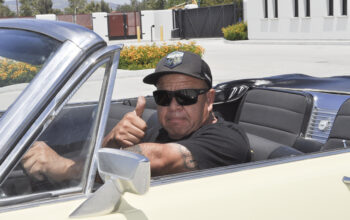Among the activities that took place during the 21st annual Farm Walk, one stood out from the rest: Lucky, a mixed-breed 18-year-old horse that was painted on both sides in order to teach attendees horse anatomy.
Since 8 a.m. on Sunday, 20-year-old horse science major Rebekah Gilliland had been turning him from side-to-side so spectators could see the colorful paint on each of the horse’s sides.
Lucky is one of the many mixed horses that the school has. He has dark brown hair and is described as calm, which is why he was chosen to be in the exhibition this year.
Gilliland and some of her classmates, with the help of Betsy Connolly, professor of equine science and health at Pierce, started painting Lucky on Saturday, April 27.
“We painted his innards on one side, and his skeleton on the other side,” Connolly said. “We used anatomically-correct drawings for all of that, and washable tempera paint.”
The drawing process of Lucky’s vital organs and skeleton took over a day and half, said Connolly.
The horse rolled over Sunday morning, and they had to repaint what was wiped off in time for Farm Walk, according to Gilliland.
Next to Lucky’s enclosure was what Connolly called the “first-aid corner” with a table exposing horses’ skeletons alongside a human and a bear skull to explain the differences.
Connolly included the variety of skeletons to show the audience the size and difference of bone structure between humans, bears and horses.
Children stopped by the table and stared in amazement not only to the bones, but at Lucky and the colorful painting all over his dark brown hair.
Lucky had painted on him his digestive track and vital organs on one side. On the other, the horse’s skeleton was showed.
This exposition of bones and watercolor-painted anatomy was not only for Farm Walk purposes, but also for the classes that Connolly teaches at Pierce.
“[Farm Walk] is a chance to share with the public the things we learn in our class,” said Connolly.



